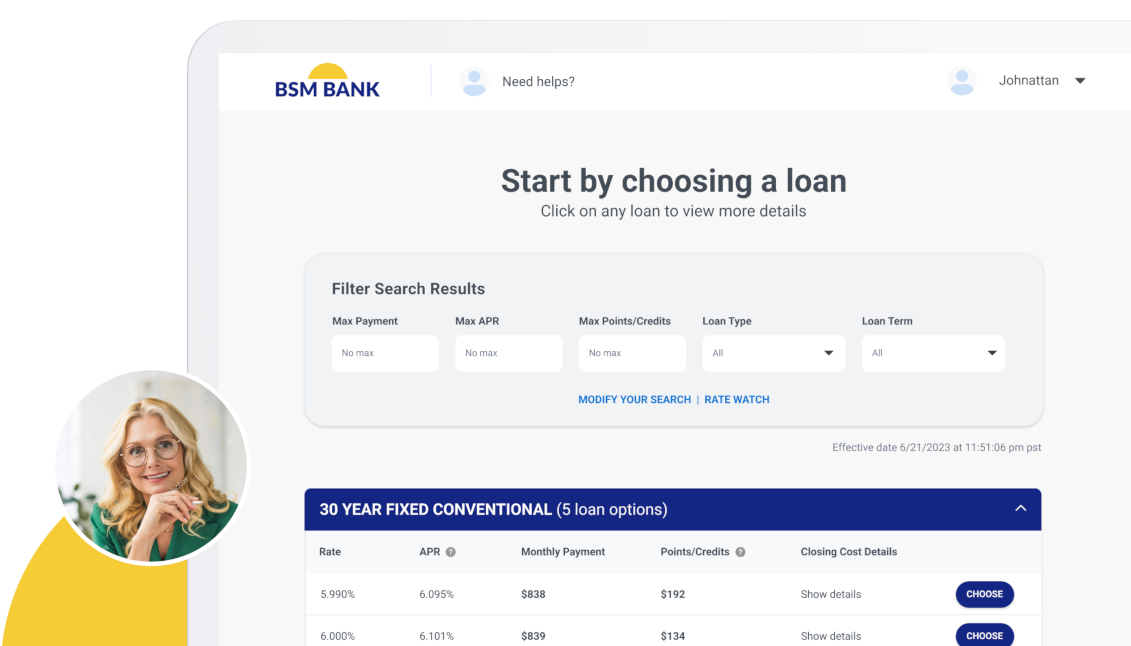Traditional banking is built on customer relationships through conversation and face-to-face interactions at the local branch. Almost 70% of banking is digital but this doesn’t mean that customers don’t expect engagement from their financial service providers. Relationship-based digital lending combines data, technology and serviced-based traditional banking.
Customer relationships depend on a quick, seamless experience with as many human touch points as possible. Financial service industries are moving toward the creation of a hybrid model of digital-only and traditional services. Doug Hutt, Dallas Capital Bank’s chairman and CEO says, “We must embrace technology that is both convenient and useful for our customers, but not rely on it so heavily that the human side of banking gets lost,” and customers expect nothing less.
Customer Relationships and Loyalty
Switching banks has never been easier and millennials are more likely to leave their financial service institution behind over their predecessors. In a survey of 9,000 bank customers in 9 countries by FIS, a banking and payment technology company, only 23% of customers across the globe believe their bank is meeting expectations.
What’s the driving force behind customer loyalty?
Trust
When customers feel that a relationship is only transactional, there is no trust. According to an Accenture survey, 80% of consumers see their relationship with their financial institution as a transaction. Trust needs to be built through transparency, personalization and targeted services and experiences.
Not only must each interaction be personal, but customers need it to be fast and secure. A top concern for consumers is cybersecurity and hidden fees or charges. Only 32% of consumers trust that their financial service provider delivers full transparency about charges and fees. Lenders need to build themselves back up as trusted financial advisors in the eyes of the consumer to strengthen customer relationships.
User Interface and Data Security
First impressions are everything and providing a clean, user-friendly design across digital lending platforms is a must-have. It’s what we first see and how we interact with the platform and it directly impacts customer relationships and satisfaction.
Banking UI is supposed to take you through every process, whether it’s a money transfer or setting up a new account, while also giving you control and security. An aesthetically pleasing, well-structured platform can make a digital lending company stand out amongst competitors.
User interface is all about ease and design but it’s usually at a cost to security. For instance, extra steps in identity verification provide the needed security at a cost to the user experience. Security is a real threat and it’s ranked as the most in-demand mobile banking feature. Slacking on security only damages customer relationships with their service providers.
Capital One’s data breach further cemented the importance of data security and fraud-prevention features. Banks are marketing certain services such as suspicious transaction alerts, the ability to freeze and unfreeze cards and the option to quickly dispute a transaction. These features add extra security while also being quick and easily accessible.
Customers want procedures in place to prevent cyber attacks but there’s usually a delicate balancing act between user-friendliness and data security.
High-Quality Service
What’s the customer’s idea of great service? Rising customer expectations dictate what quality service means. People want convenience, value, speed and simplicity on a personalized level.
Human connection is valuable. In an increasingly digital world, we can’t forget the importance of building connections through human interaction. Customer interactions, whether it’s digital or branch, need to be positive from start to finish.
Financial institutions must build a personalized experience to create engagement in order to foster and strengthen customer relationships. While brick and mortar businesses have the upper hand with face-to-face interactions, digital lenders still need to connect to consumers.
Growing Customer Relationships Through Engagement
A solid customer relationship needs engagement. Customers who willingly interact with their financial institutions are more likely to view their lender as a trusted advisor. One way to create customer engagement is through digital marketing. Lenders need relatable content that adds value to their customers and the right channels to consistently and conveniently share this information.
Sharing educational, informative content for customers is providing value. By becoming the go-to service provider for financial concerns and inquiries, digital lenders can be seen as the authority figure on financial matters. Lenders can also educate consumers about their products and services through their content.
Subscribe to BeSmartee 's Digital Mortgage Blog to receive:
- Mortgage Industry Insights
- Security & Compliance Updates
- Q&A's Featuring Mortgage & Technology Experts
Social Media
Sharing content and actively engaging with customers through social media is a great way to directly connect with the consumer base and improve customer relationships. We Are Social’s Digital in 2020 report revealed that more than 3.8 billion people use social media and 90% of our time is spent on mobile apps. With so many users online, it’s one of the best engagement opportunities and it gives lenders a chance to connect on a personal level on multiple touchpoints.
Social media is a core marketing strategy for many businesses across the globe. This has been one of the most effective engagement strategies for digital lenders. Without physical branches and face-to-face interaction, social media comments, shares, likes and tweets give companies a chance to connect and build customer relationships.
Mobile Applications
Mobile banking is on the rise. Business Insider Intelligence’s Mobile Banking Competitive Edge Study revealed that 89% of those surveyed said they used mobile banking and 97% of millennials stated using mobile banking. Besides having access to accounts while on the go, mobile banking provides personalized alerts such as low balances or when bills are due.
The demand for mobile wallets is also growing. Mobile wallets allow users to connect credit or debit cards to their smartphones for contactless payment. Person-to-person payments have also never been easier. Mobile banking delivers instantaneous action and easy accessibility and customers expect nothing less.
AI and Chatbots
Chatbots give the instant service and responses that customers want. A 2018 State of Chatbots Report revealed that only 29% of baby boomers and 33% of millennials said chatbots are “friendly and approachable.” While these are two important characteristics in customer service, there have been advancements in the “digital human” platform that recreate human interaction in digital banking.
Banking chatbots are becoming one of the first touchpoints of customer service. Not every customer service inquiry can be automated, but many can.
Financial institutions are using chatbots to automate replies to common customer questions and concerns for quick self-help and even give personalized account information. This gives customers who prefer self-service the option to conversationally request information without having to scour through the FAQ section or wait to connect to a human for simple answers. Nothing beats real people but chatbots and AI are moving towards the recreation of human interaction to make that connection and improve customer relationships.
Using Data Insights for Customer Satisfaction
Srini Nallasivan, chief analytics officer at U.S. Bank stated, “Our goal is to build meaningful, trusted relationships with our customers because the deeper these relationships get, the more involved in their financial lives we can be”.
Technology and data are helping build customer relationships and financial service institutions today have a deeper insight into their customers’ expectations and how they behave while interacting with their platforms. By using artificial intelligence, advanced analytics, and machine learning, they are able to deliver products and services that address customer needs.
A 2019 survey conducted by BAI, the nonprofit Bank Administration Institute, revealed that two-thirds of financial service organizations “sometimes” or “infrequently” leverage customer data to improve customer relationships and experiences. Core customer information can be used to roadmap life changes and family dynamics for targeted marketing.
Needs and wants change through life and lenders need to stay ahead of the game. Customers expect their digital venture to be the same as walking into a brick and mortar branch and journey mapping using this data makes it possible to provide a more personalized, deeper experience.
The Bottom Line: The Customer is Always Right
Newer generations are more comfortable with mobile apps and online services and “unlike boomers and pre-boomers, millennials tend to take a digital-first, branch-second approach to their banking,” said Bob Neuhaus, vice president of global financial services at J.D. Power. While banks and lenders are starting to focus on technological innovation to adapt and evolve, according to customer preferences, this doesn’t mean human interaction is obsolete.
Building customer relationships over digital platforms is about the delicate balance between high-tech and lender interaction. Technology is not replacing human interaction in digital financial services but should be used to more efficiently serve customers.
Get updates from BeSmartee sent directly to your inbox! Subscribe to our newsletter here.




